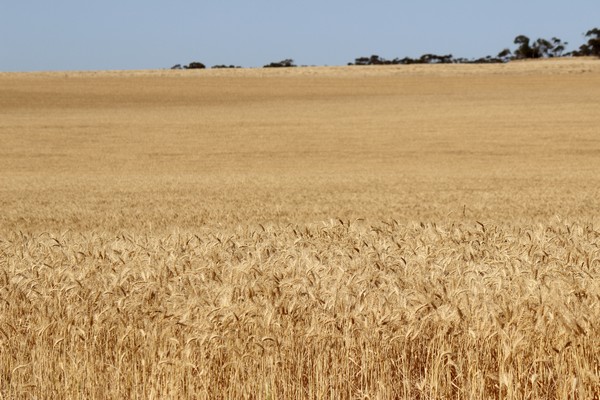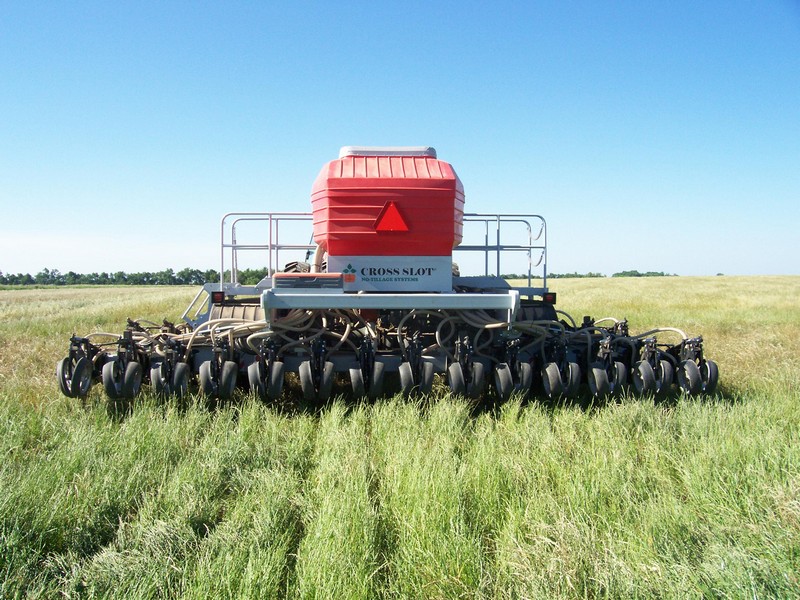How Cross slot® Captures Carbon
HOW CROSS SLOT® LOW-DISTURBANCE NO-TILLAGE CAPTURES CARBON FROM THE ATMOSPHERE AND RECYCLES IT INTO THE SOIL
The problem: |
3. Just under 70% of the world’s food comes from annual cereals (wheat, corn, rice, barley, sorghum, rye corn and others). 4. But only 4% of the world’s surface is arable land capable of growing annually-sown food or fibre crops. 5. The area of arable land available to grow food crops is declining each year because of urbanization, desertification and politically-motivated tree planting. 6. There is barely enough food produced today to feed every human mouth on the planet. 7. The world’s population is expected to continue to grow exponentially and is widely predicted to reach 9 billion by 2050 (from 6 billion today). 8. Simple arithmetic says that unless the amount of food the world grows keeps pace with population growth, someone is going to go hungry by 2050. 9. The most obvious change required is to increase the productivity of each hectare of arable land that remains. 10. But yields of the world’s biggest crop, wheat, have remained static for the past 25 years despite improvements in genetics, herbicides, pesticides, fungicides, husbandry, and precision farming. 11. During that same period, the carbon (soil organic matter) levels of arable soils have declined by 75% due to oxidation of soil organic matter from ploughing, cultivation and other soil disturbance methods used to grow food and fibre. 12. 2-3 tonnes per hectare of carbon (as CO2) can be emitted into the atmosphere from a tilled soil during any one seeding event that is undertaken using conventional tillage or cultivation. 13. Up to 20% of atmospheric CO2 is believed to come from the world ploughing its soils to feed itself each year. 14. Conservation practices such as minimum tillage and strip tillage have only slowed the oxidation of soil carbon. Most are incapable of stopping or reversing it. |
The solution: |
16. Shank or tined –type no-tillage openers are not capable of undertaking LDNT because they disturb too much soil and cannot handle surface residues without blocking. 17. Some disc type openers can achieve LDNT, but not all of them. 18. According to the USDA’s revised universal soil loss Equation, Cross Slot® is clearly the pinnacle of LDNT openers against which all others are measured. 19. Many of the other disc-type LDNT systems risk reducing crop yields because of unreliable seedling emergence, hairpinning problems, slot compaction and smearing problems, poor slot covering and an inability to band fertilizer at seeding time. 20. It is unrealistic to expect farmers to risk lowering their living standards for the good of society. 21. Cross Slot® LDNT more often than not increases crop yields at the same time as it (a) minimises oxidation of existing soil carbon, (b) facilitates the recapture of CO2 from the atmosphere (c) recycles this recaptured carbon back into the soil, (d) helps mitigate climate change, and (e) helps purify air and water quality. 22. Cross Slot® was invented at Massey University in New Zealand and is used all over the world. 23. There are 1.4 billion hectares of arable land in the world (FAO statistics, 2013). 24. Arable soils are re-seeded each year, often twice per year. 25. Most arable crops are grown for consumption of food or fibre by mankind. 26. Arable crops remove CO2 from the atmosphere by photosynthesis and process the carbon into carbohydrates at a per-hectare rate comparable to trees and algae. 27. Arable crops make this recaptured carbon available for recycling at least once (and often twice) per year rather than every 30 or more years as for trees. 28. Mankind does not eat trees as mainstream food. Arable crops therefore have a dual role. 29. Unused parts of arable crops that remain after harvest (including roots) are referred to as crop residues. 30. Crop residues may comprise up to 50% or more of each arable plant’s total biomass by weight. 31. Crop residues typically contain about 40% carbon. 32. With conventional tillage and many conservation tillage regimes, crop residues are regarded as a nuisance and are removed before the next crop can be sown to avoid blocking machinery. |

 1. 85% of the world’s food comes from arable crops and this is unlikely to change anytime soon.
1. 85% of the world’s food comes from arable crops and this is unlikely to change anytime soon.
